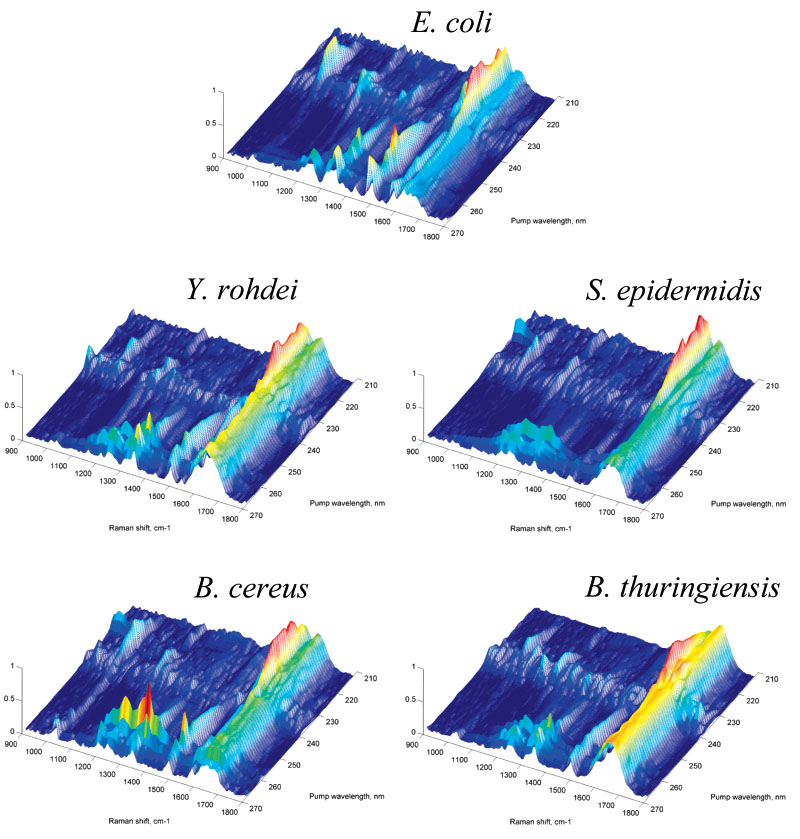
Bacterial signatures. Two-dimensional resonant-Raman signatures of E. coli (top row), Y. rohdei and S. epidermidis (middle row), with B. cereus and B. thuringiensis (bottom row). The horizontal axis in each frame is the Raman shift, from 900 to 1800 cm-1, relative to the excitation laser wavelength. The vertical axis is the laser wavelength from 210 to 270 nm. Colors represent the relative amplitude of resonant-Raman scattering from the bacteria.
